#litli hrútur
Text


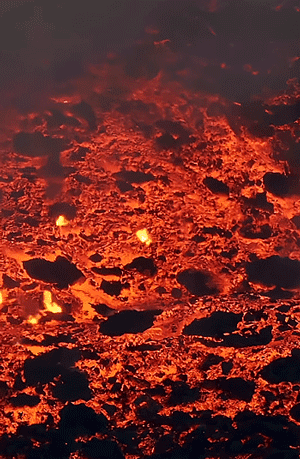

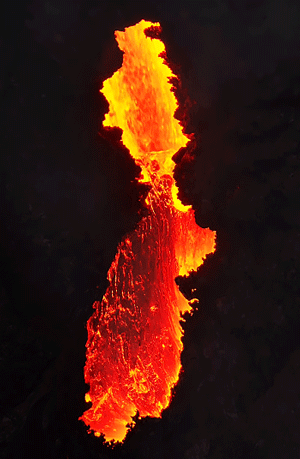

Lava Rivers & Streams l jvn.photo l Iceland
#volcano#iceland#volcanoes#earth#volcanic eruption#lava#magma#volcanic ash#planets#fagradalsfjall#Litli Hrútur#reykjanes peninsula#nature
2K notes
·
View notes
Text
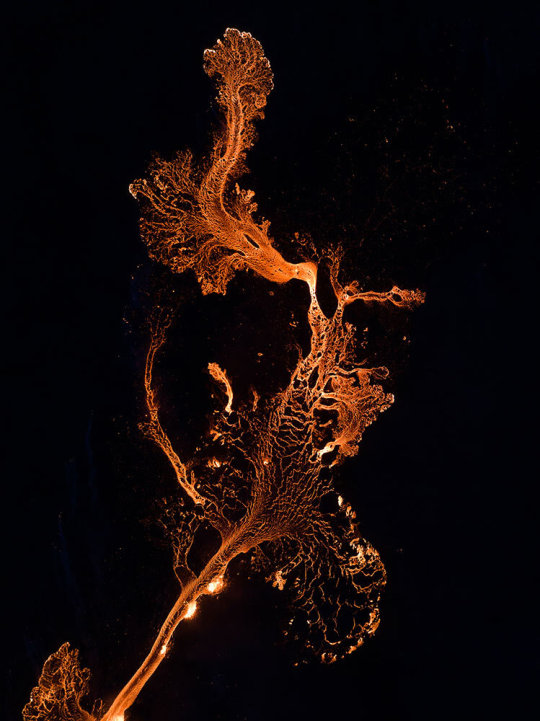
An aerial view shows the new volcanic eruption at Litli Hrútur. Geological changes normally take thousands of years, but here at the volcano, where new land is forming, the earth changes rapidly as fissures open up, and molten lava spills across the landscape.
PHOTOGRAPH BY KARIM ILIYA, VERB PHOTO
#karim iliya#photographer#national geographic#aerial photography#volcanic eruption#litli hrútur#iceland#landscape#lava#volcano#nature
169 notes
·
View notes
Text

" Litli Hrútur Eruption " //© Hermann Helguson
#Litli Hrútur#Iceland#nature#landscape#Volcano#eruption#Lava#aesthetics#wanderlust#explore#follow#discover
186 notes
·
View notes
Text

Volcanic eruption in Iceland 19/07/2023
Live stream
105 notes
·
View notes
Text


3 notes
·
View notes
Text
Il sentiero segreto per vedere al meglio l’eruzione del nuovo vulcano in Islanda
DAJE
https://youtube.com/shorts/nk9UHEViUTo?feature=share3


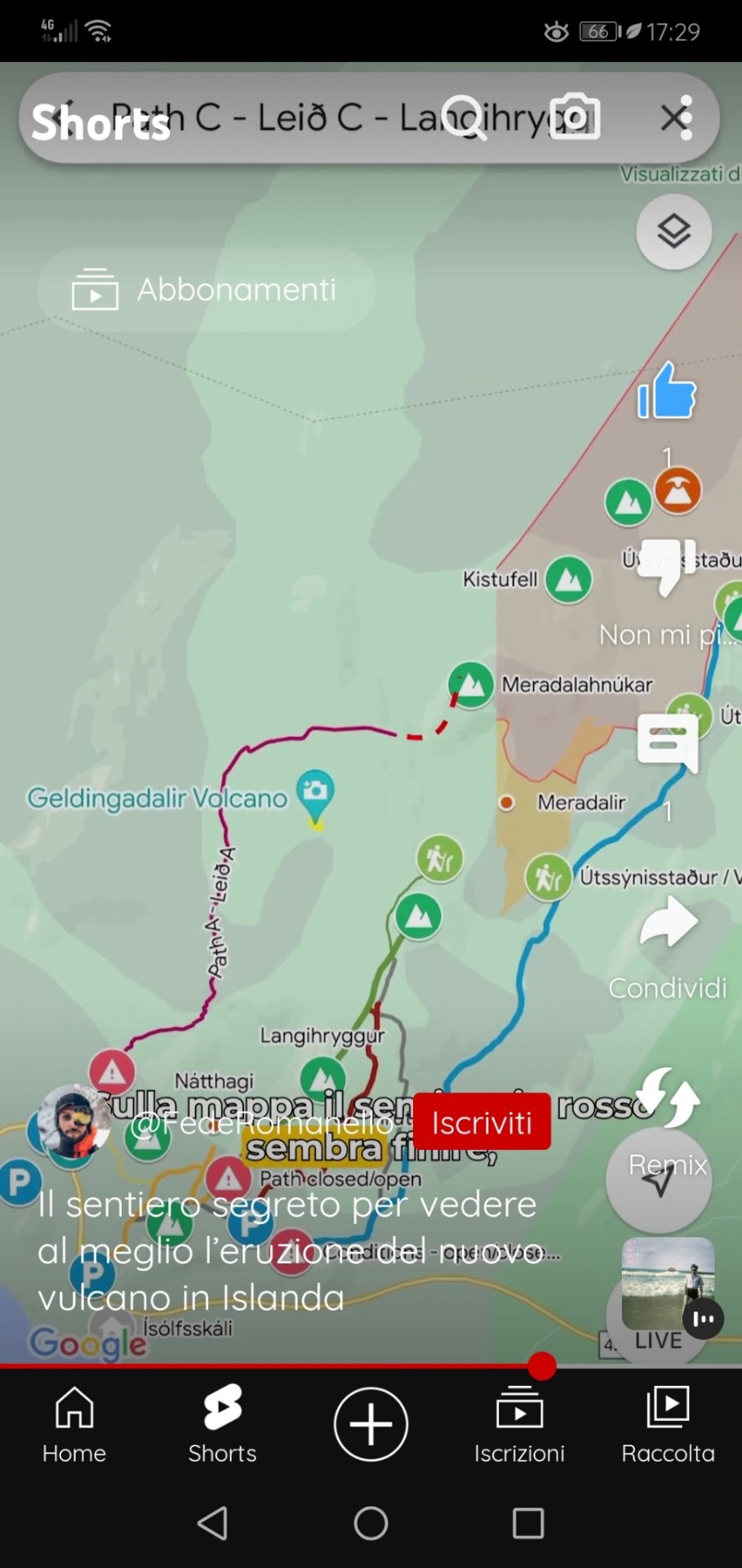

1 note
·
View note
Text
Iceland. Litli-Hrútur eruption. Source: RÚV.is livestream 23-7-2023 06:12 am

#iceland#iceland volcano#volcano webcam#volcano#litli hrútur#litli hrutur eruption#obsessed with this beauty#we are having breakfast together#happiest sunday
0 notes
Text
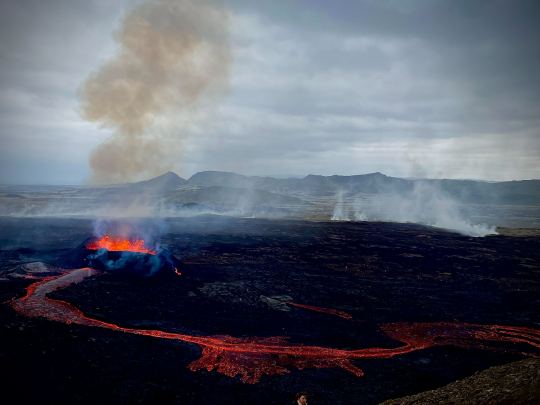
Eruption
Joseph Knott. Litli-Hrútur, Reykjanes.
#eruption#volcano#lava#magma#litli-hrútur#Iceland#avoidingthebeatenpath#seekingterrainunexplored#terrainunexplored#akqa
7 notes
·
View notes
Text



For centuries, the country’s western volcanic peninsula has been dormant, but a new era of volcanic activity could be on the horizon.
The Fagradalsfjall Volcano, a raised crater of bubbling lava — glowing bright yellow in an expanse of dark gray — is the latest eruption heralding Iceland’s new period of volcanic activity.
The eruption announced its approach on July 4 of this year, when southwest Iceland was rocked by more than 2,000 earthquakes in just 24 hours.
Not long after, seismic activity dropped off as magma rose to shallow depths and ultimately gave way to oozing molten rock on July 10.

Located next to the small mountain of Litli-Hrútur, this eruption is taking place on Reykjanes, a volcanically active peninsula that has become a popular destination among tourists looking to see lava fountaining above and pouring onto the surface.
However, the site of the new eruption is potentially hazardous — new fissures may open nearby without warning, rivers of lava can form at a quick pace, and toxic gas can quickly fill the air, according to the Iceland Met Office.
This eruption is the peninsula’s third volcanic paroxysm in a row, following on from similar lava-spewing eruptions in 2021 and 2022 — and it’s unlikely to be the last.
After an eruption last summer, Dave McGarvie, a volcanologist at Lancaster University, told National Geographic that the recent uptick in volcanic activity, “... could herald the start of decades of occasional eruptions.”

Iceland’s volcanic geology
The Reykjanes Peninsula lies about 17 miles southwest of Iceland’s capital city Reykjavik.
It sits atop the continually spreading Mid-Atlantic Ridge, where the North American plate to the west and the Eurasian plate to the east are gradually pulling apart.
Superhot, gassy magma, which is less dense than the surrounding rock, can sometimes rise into the shallow crust from buoyancy alone, but all that regional stretching also creates cracks where molten rock can infiltrate.
The peninsula’s subterranean bedlam seems to manifest as periodic busts of volcanism.
Historical accounts and studies of ancient volcanic rocks show that times of volcanic repose transition into loud seismic and eruptive awakenings in a cycle that’s transpired several times in the past few millennia.
Although the region had been volcanically dormant for centuries, the tectonic sundering happening in the depths meant that the latest eruptions have long been in the works.
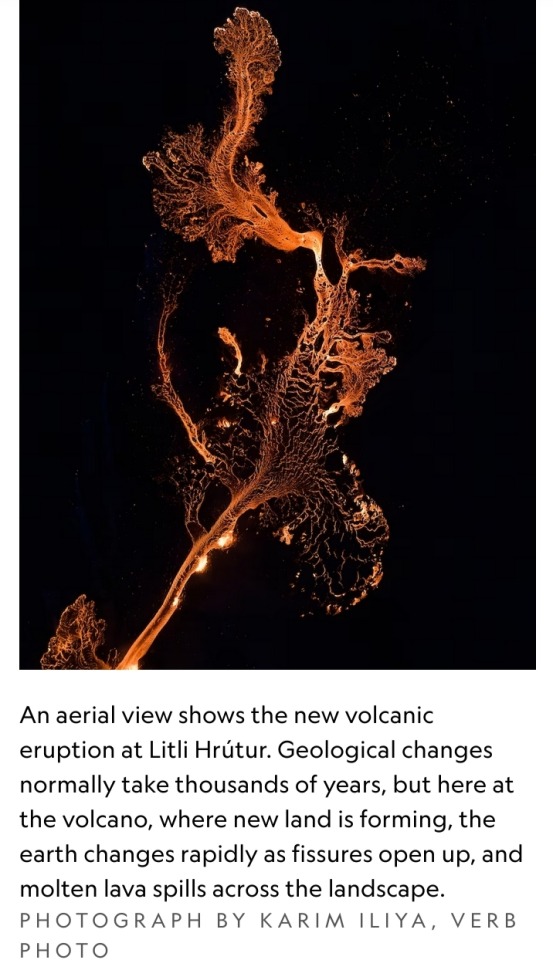
A fiery new beginning
And in recent years, several sheets of magma ascended toward the surface, indicated by the changing shape of the ground and swarms of earthquakes, says Tobias Dürig, a volcanologist at the University of Iceland.
But for some time, these magmatic serpents failed to see sunlight — their escape was stymied either from the loss of their own upward momentum or because the resilient crust didn’t offer an escape hatch.
Nevertheless, as earthquakes began to crescendo in both frequency and strength from late 2019 onwards, scientists suspected that an eruption sometime in the future seemed inevitable.
That was confirmed in dramatic fashion on 19 March 2021, when lava began gushing from a 1,650-foot-long fissure in a valley of the Geldingadalur region.
These ferocious fires are gifting scientists with an unparalleled look at the connective tissue between the igneous abyss below and the lava-licked landscape above.
Their efforts help improve our understanding of Earth’s viscera, of Iceland’s volcanic cadence, and of this peninsula’s volcanic dangers.

#Fagradalsfjall Volcano#Iceland#Reykjanes#Litli-Hrútur#Reykjavik#Mid-Atlantic Ridge#volcanic activity#volcanic era#volcanic eruption#volcanoes#magma#National Geographic#Nat Geo
4 notes
·
View notes
Text
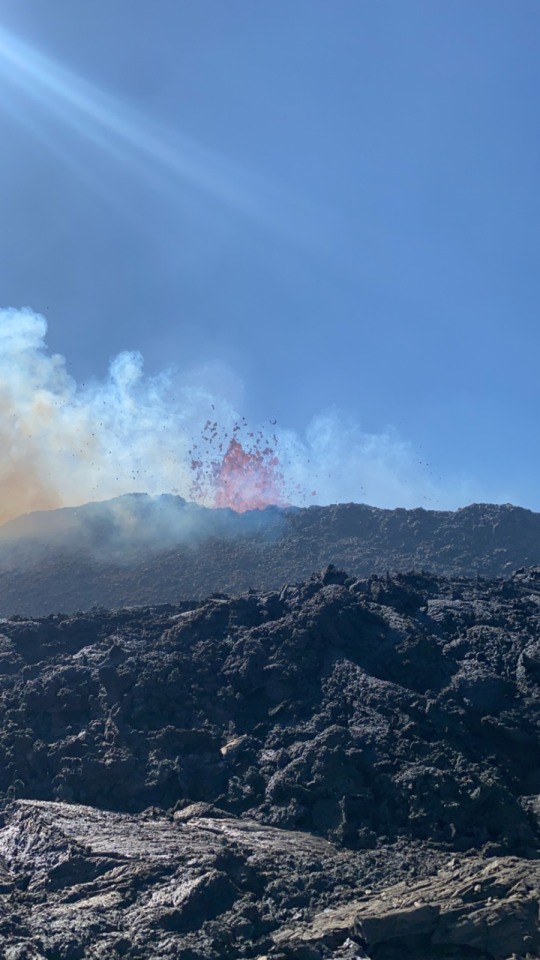
Went and saw the eruption today!😁
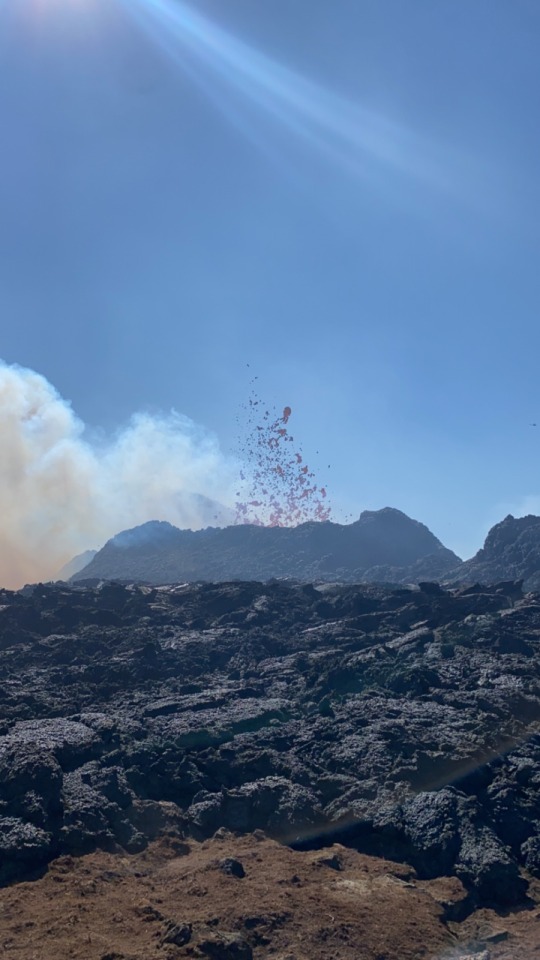

3 notes
·
View notes
Text

Photographed on July 11, 2023—the Fagradalsfjall Volcano's gas cloud stretches over the Litli-Hrútur mountain and is illuminated at sunset. Smoke from nearby lava-ignited moss fires blow into the valley below. Photograph By Mike Mezeul II Photography
Iceland 🇮🇸 Has Entered A New Volcanic Era
The country’s volcanic peninsula has been dormant for centuries. But experts say the tectonic shifts behind the recent eruptions and earthquakes are a long time coming.
By Robin George Andrews | July 24, 2023
For centuries, the country’s western volcanic peninsula has been dormant, but a new era of volcanic activity could be on the horizon.
The Fagradalsfjall Volcano, a raised crater of bubbling lava—glowing bright yellow in an expanse of dark gray—is the latest eruption heralding Iceland’s new period of volcanic activity.
The eruption announced its approach on July 4 of this year, when southwest Iceland was rocked by more than 2,000 earthquakes in just 24 hours. Not long after, seismic activity dropped off as magma rose to shallow depths and ultimately gave way to oozing molten rock on July 10.
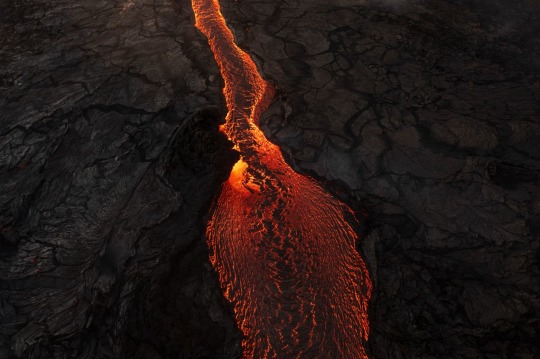
A river of lava cuts its way through the valley in between the Keilir and Litli-Hrútur mountains on the Reykjanes Peninsula. Photograph By Mike Mezeul II Photography
Located next to the small mountain of Litli-Hrútur, this eruption is taking place on Reykjanes, a volcanically active peninsula that has become a popular destination among tourists looking to see lava fountaining above and pouring onto the surface. However, the site of the new eruption is potentially hazardous—new fissures may open nearby without warning, rivers of lava can form at a quick pace, and toxic gas can quickly fill the air, according to the Iceland Met Office.
This eruption is the peninsula’s third volcanic paroxysm in a row, following on from similar lava-spewing eruptions in 2021 and 2022—and it’s unlikely to be the last.
After an eruption last summer, Dave McGarvie, a volcanologist at Lancaster University, told National Geographic that the recent uptick in volcanic activity, “... could herald the start of decades of occasional eruptions.”

A lava flow smolders, glowing red through black volcanic rock. While the Icelandic government has warned that this latest eruption is hazardous to visitors, the region is a popular destination for volcanic tourism. Photograph By Chris Burkard, Verb Photo
Iceland’s Volcanic Geology
The Reykjanes Peninsula lies about 17 miles southwest of Iceland’s capital city Reykjavik. It sits atop the continually spreading Mid-Atlantic Ridge, where the North American plate to the west and the Eurasian plate to the east are gradually pulling apart. Superhot, gassy magma, which is less dense than the surrounding rock, can sometimes rise into the shallow crust from buoyancy alone, but all that regional stretching also creates cracks where molten rock can infiltrate.
The peninsula’s subterranean bedlam seems to manifest as periodic busts of volcanism. Historical accounts and studies of ancient volcanic rocks show that times of volcanic repose transition into loud seismic and eruptive awakenings in a cycle that’s transpired several times in the past few millennia.
Although the region had been volcanically dormant for centuries, the tectonic sundering happening in the depths meant that the latest eruptions have long been in the works.
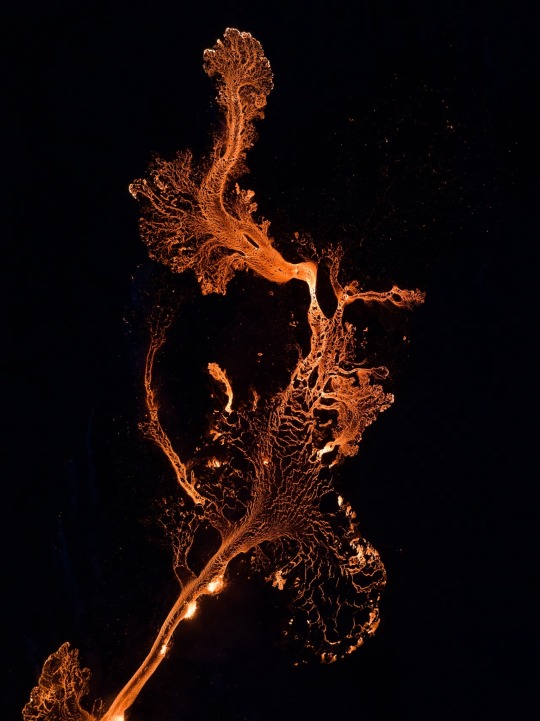
An aerial view shows the new volcanic eruption at Litli Hrútur. Geological changes normally take thousands of years, but here at the volcano, where new land is forming, the earth changes rapidly as fissures open up, and molten lava spills across the landscape. Photograph By Karim Iliya, Verb Photo
A Fiery New Beginning
And in recent years, several sheets of magma ascended toward the surface, indicated by the changing shape of the ground and swarms of earthquakes, says Tobias Dürig, a volcanologist at the University of Iceland. But for some time, these magmatic serpents failed to see sunlight—their escape was stymied either from the loss of their own upward momentum or because the resilient crust didn’t offer an escape hatch.
Nevertheless, as earthquakes began to crescendo in both frequency and strength from late 2019 onwards, scientists suspected that an eruption sometime in the future seemed inevitable. That was confirmed in dramatic fashion on March 19, 2021, when lava began gushing from a 1,650-foot-long fissure in a valley of the Geldingadalur region.
These ferocious fires are gifting scientists with an unparalleled look at the connective tissue between the igneous abyss below and the lava-licked landscape above. Their efforts help improve our understanding of Earth’s viscera, of Iceland’s volcanic cadence, and of this peninsula’s volcanic dangers.

An aerial view of the main cinder cone that has formed from the 2023 Fagradalsfjall Volcano eruption in Iceland. Photograph By Mike Mezeul II Photography
Iceland 🇮🇸 Eruption May Be the Start of Decades of Volcanic Activity
A second outburst of lava in under a year strongly suggests that the country’s Reykjanes Peninsula will become one of the most volcanically dynamic parts of the planet for several generations. (Some More Photographs August 2022)
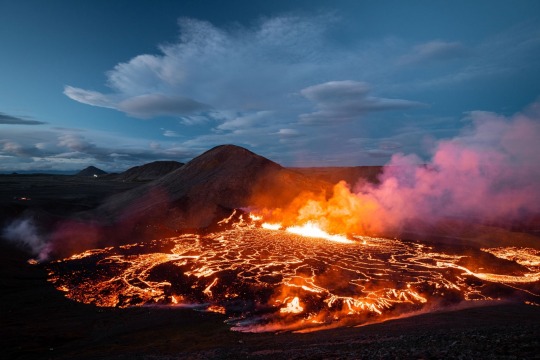
After centuries of quiescence, Iceland's Reykjanes Peninsula has erupted twice in less than a year, sending up fountains of incandescent rock. The latest eruption, which started at 1:18 p.m. local time on August 3, 2022, opened up at a fissure only a few hundred feet away from the cone crafted by last year’s volcanic outburst.

The incandescent rock is erupting with greater vigor than last year's outburst, but what the volcano will do in the days ahead—including how long this eruption will last—remains unknown. A small plane at the bottom of this image illustrates the scale of the new eruption. (August 2022)
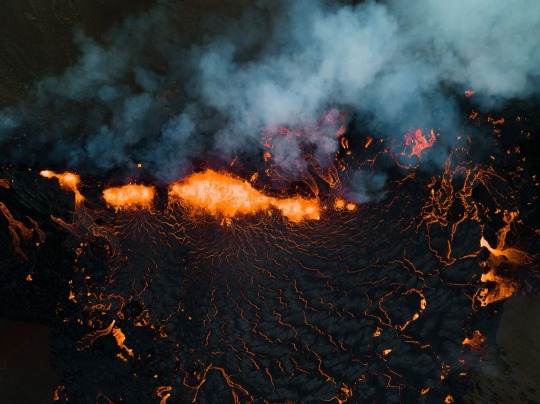
While the volcano currently poses little risk, authorities are keeping a close watch on the changing hazards. In the image below, members of the Icelandic Association for Search and Rescue are seen investigating the dangers near the lava's edge. (August 2022)
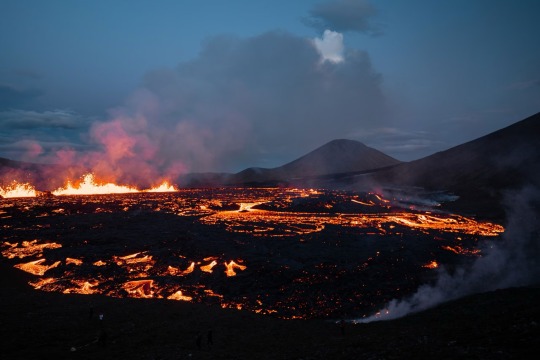
The sputtering lava has already begun building small mounds of spatter near the fissure and filling the valley with a pool of molten rock. It’s unclear for now if the lava will remain confined to these valleys or will travel further afield, perhaps reaching the sea. But for now, says Evgenia Ilyinskaya, a volcanologist at the University of Leeds, the eruption is providing scientists with “a fantastic natural experiment.” (August 2022)
#Volcanoes 🌋#Iceland 🇮🇸#Volcanic Peninsula#Volcanic Activity#Fagradalsfjall Volcano 🌋#Eruptions#Earthquakes#Potentially Hazardous#Fissures#Dave McGarvie#Lancaster University#The National Geographic#Litli-Hrútur#Reykjanes#Iceland 🇮🇸 Met Office#Geological Changes#Earth’s Viscera
0 notes
Text
Drone Footage Captures the Power and Beauty of Iceland's Most Recent Volcanic Eruption
The Litli-Hrútur volcano recently erupted in Iceland, giving photographers a new opportunity to capture the raw power of planet earth. Icelandic photographer Ísak Finnbogason captured incredible drone footage of the fissure, showing us the vibrant lava spewing from the earth.
Gorgeous footage of the lava show us fissures and fingers of molten rock undulating from the black rock, the extreme heat…

View On WordPress
0 notes
Text

Iceland Volcano Lava Eruption Litli-Hrútur 2023 Reykjanes Peninsula Reykjavik IS Mavic 3 Pro Cine Fine Art Aerial Landscape Photography Iceland!
Elliot McGucken Master Fine Art Nature Photographer
By 45SURF Hero’s Odyssey Mythology Photography
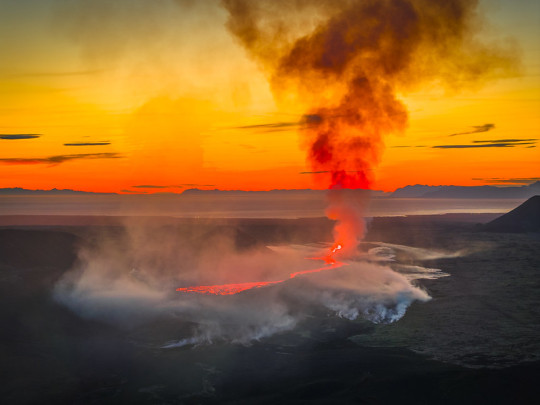
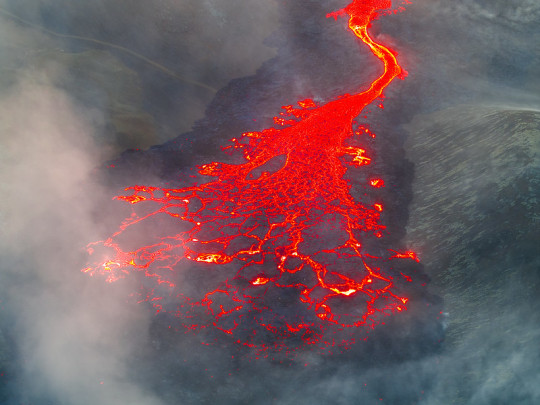
#4surf hero's odyssey mythology photography#elliot mcgucken master fine art nature photographer#photographer#iceland#volcanic eruption#lava#litli hrútur#volcano#reykjanes peninsula#reykjavik#aerial landscape#nature
96 notes
·
View notes
Text

" The Litli-Hrútur Eruption " //© Hörður Kristleifsson
Music: © Liborio Conti - Forestal
#Litli-Hrútur#Iceland#nature#landscape#Volcano#Eruption#Lava#Smoke#4K#8K#12K#fpv#Drone#reels#aesthetics#wanderlust#explore#follow#discover
127 notes
·
View notes
Text
In Islanda il vulcano Litli Hrútur erutta da cinque giorni
Nessun disagio per il vicino aeroporto di Keflavik
0 notes
Text
Erupción de Volcán en Islandia: Alerta ante el Nuevo Evento
Un volcán en el suroeste de Islandia comenzó a entrar en erupción el lunes, según las autoridades meteorológicas del país, 11 meses después de que su última erupción oficialmente terminara.
La erupción ocurre en un valle deshabitado cerca de la montaña Litli-Hrútur, a unos 30 kilómetros al suroeste de la capital, Reykjavik.
La zona, conocida ampliamente como el volcán Fagradalsfjall, ha entrado…
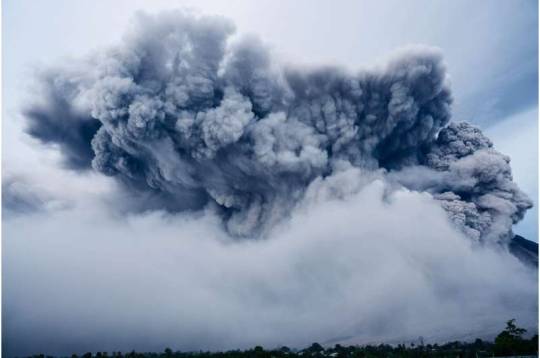
View On WordPress
#aeropuerto#ceniza#daños#erupción#espectaculo#Eyjafjallajokull#Fagradalsfjall#Islandia#Litli-Hrútur#Reykjavik#riesgos naturales#viajeros internacionales#volcan#vuelos
0 notes